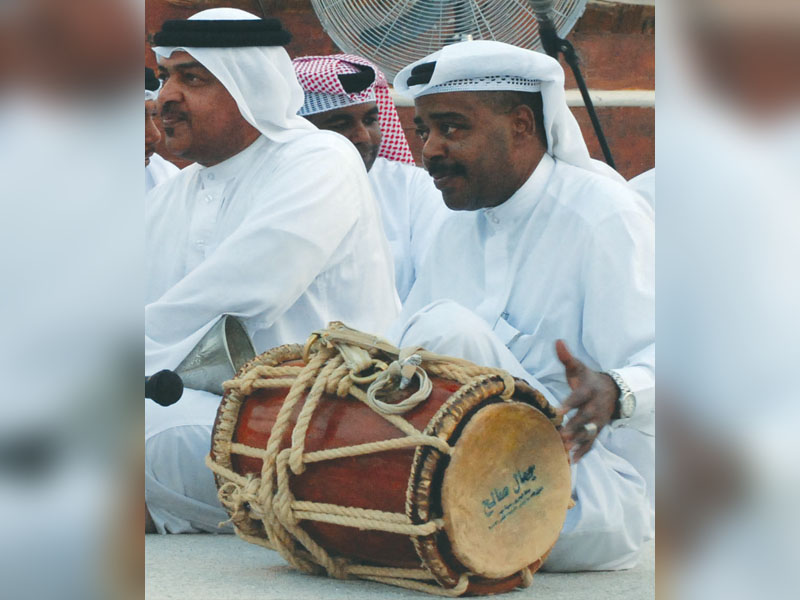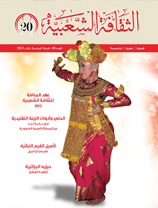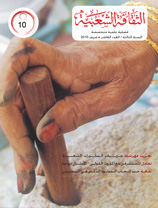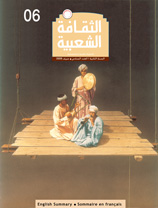The Drum
Issue 10

Gamal al-sayad (Bahrian)
There is a dispute about the origin of the drum. Some believe the origin is India, while others admit it is Africa. Depending on the fact that Bahrain lacks forest in which al Karaf is available and it is imported from India the researcher adopts the first argument. Moreover, there is a similarity in the craftsmanship of the drum in both India and Bahrain. The way of linking al Solkh with al Karaf and the addition of al Karaf to the face of the drum, are all identical in both countries However, the terminology “drum” is masculine in Bahrain dialect. So the drum is considered as a masculine instrument. This has nothing to do with neither its thick sound nor any other reasons. The drum is also played by both men and women. The drum is a private ownership for the owner of the house or the ship. Earlier, the drum was not owned by the player, probably because it is not used lonely with the exception of the case of al Musahir who awakens the people in the midnight in Ramadan. Recently the players of percussion used to have their own drums. The person who is in charge of the musical instruments among which is the drum, is called the owner of al Ida. The drum is kept with other percussion instruments at the home of al- Ida. These instruments have a share in the payments of the traditional Ida. The drum is an instrument of professionals, owned either by the professional player or the musical band, the Ida. The common people do not own the drum. The society usually undermined the drum player. Such a humiliation is explained in the attitude of the Arab authors who rated players of the percussion instruments in a lower status. This is clearly manifested in the writings of 12th century. In these writings the percussion instrument is always associated with the Black people whose tradition of percussion, dancing and folk music are considered of less value than Art Music. Although the player of the drum is undermined, as we mentioned, yet he is, privileged with a special status among his colleagues in the band. He is also privileged with special artistic consideration, and he is called the (sponsor of the drum). Moreover, he has a share as equal as the Sakul as a reward for his artistic excellence. He is also rated second after the singer. The drum is musically highly valued because of its dominancy in the style of the rhythm. Compared with other percussion instruments, the drum is rather expensive; its price starts from 100 BD up to 300 BD. The Drum has a long life span, it is not in need of a continuous maintenance. It just needs the relaxation of its ropes and suspending them in the Ida room to have fresh air for the sake of reserving al-salakh. Some of the traditional artists invented a tale that the drum is inhabited by the jinn. They attributed the tale to the fact that the drum is made of the Sidra (Lute Tree), which is inhabited by the devil as well according to the Bahraini traditional belief. Possibly such tales are made only to threaten the people, children in particular, from sitting on the drum, otherwise, it would be damaged. There is also the risk of the damage of al salakh if any body sits on any face of the drum. Moreover, any leakage of the sand under the face which is fixed to the ground will destroy the skin of that face. The drum is a major instrument in arts of the sea and other folk arts except al- Leiwa, al-Tunbura and al-Jarba, and other arts which came from abroad. The drum is also associated with the arts of the majority of the population of the Bahrain. The association of the drum with the indigenous Bahraini arts located it in a superior status. The drum is one of the instruments which are rarely decorated. The players believe that decoration constrains the extension of the ropes. The drum which is decorated with pins is called pinned drum.




































































